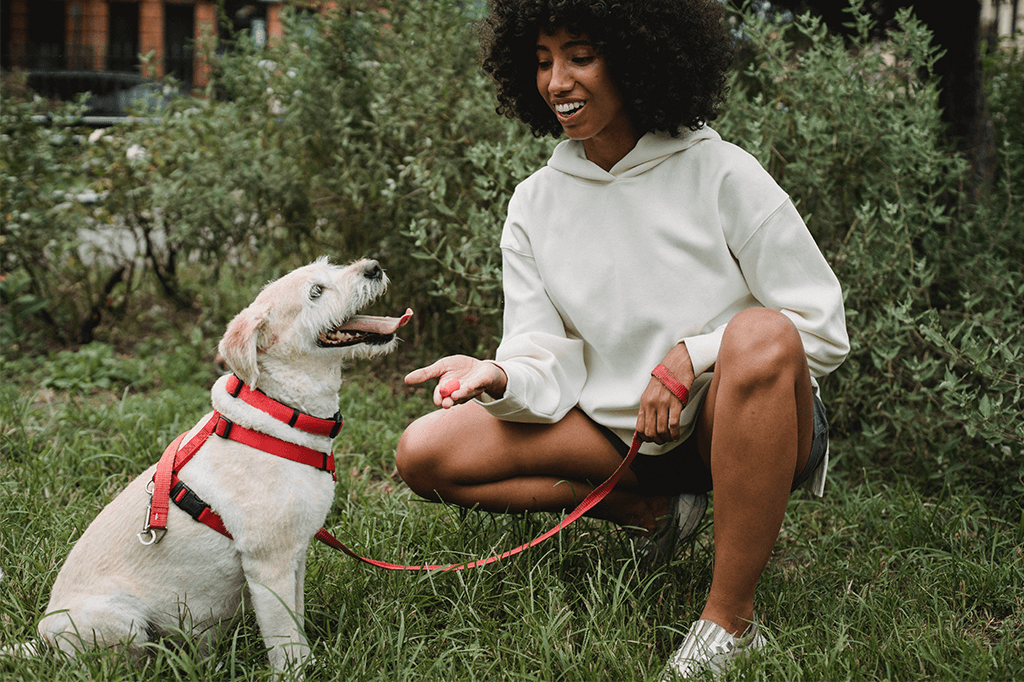An Introduction to Dog Body Language
Have you ever wished that you could really understand what your dog is trying to tell you?
Well, you can! It all comes down to dog body language. Dog’s make use of a wide range of different body signals that can tell you exactly what they are feeling and thinking.
Sometimes, what you may think your dog is trying to tell you could be the complete opposite, which is why it is so important to have an understanding of dog body language.
Of course, you could be studying this for years and still not know all there is to know, but here are some dog body language tips to get started with…
A WAGGING TAIL DOESN’T NECESSARILY MEAN A HAPPY DOG
If a dog is wagging his tail, then this means that he is happy, right?
In some cases, yes, but, in others, definitely not.
This is one of the biggest misconceptions when it comes to dog body language, as tail wagging can mean quite a few different things.
The key is to look at how the tail is being wagged:
-
Held high with a stiff wag – this means that the dog is agitated and is not going to submit, which could result in a bite. This is especially the case if the dog’s ears are also up
-
A low and slow wag – this could be a sign that the dog is nervous or scared
-
A large and loose wag – this is a sign that the dog is friendly and happy
-
A low and rigid wag – this could mean that the dog is fearful
WHAT ARE THOSE EARS TELLING YOU?
It doesn’t matter whether your dog’s ears are long and floppy or short and erect. Those ears can tell you so much about what your dog is feeling.
How?
Take a look at the base of your dog’s ear, along with the direction that this has moved in.
If the base of the ears have moved forward, then this means that the dog is alert. The ears will also usually be pointing in the direction of whatever has caught your dog’s interest. Ears that move out to the side are a sign of uncertainty and worry. Ears that are held just slightly back show that your dog is feeling relaxed. If your dog’s ears are held tightly back, then this means that your dog is worried but is willing to appease you.
THE SUBMISSIVE GRIN
Have you ever noticed your dog showing all of his teeth and “smiling” when he greets certain visitors?
This can sometimes be a frightening sight, as it can easily be mistaken for a snarl.
However, this is actually called a submissive grin, and is the complete opposite of a snarl.
Your dog does the submissive grin in order to show others that she is not a threat, and is instead being fully submissive. This will usually be accompanied by a few other submissive signs, from lifting a paw to licking the lips to squinting the eyes.
Many owners find the submissive grin incredibly cute. There is nothing wrong with turning this impulsive grin into a learned behavior.
How can you train your dog to grin on command?
Every time your dog grins, say a cue word, such as “smile” or “cheese”, and then give your dog a treat. It will not take long before your dog associates the cue word with the grinning action. Soon, your dog will be able to smile whenever he is asked to. Imagine all of the hilarious photos you will be able to take after teaching your dog this trick!
RAISED HACKLES
Just like the submissive grin, many people initially think that if a dog raises his hackles, this means that he is being aggressive.
This is not strictly true.
The hackles, which refers to the hairs that run from the neck down the backbone, all the way to the tail, end up raised when a dog is stimulated. This could be caused by anything from a frightening clap of thunder to the excitement of a visitor. Fearful dogs can also raise their hackles when they are afraid.
This isn’t something that dogs do consciously. Instead, it happens in the same way that the hairs on our arms stand when we experience a burst of adrenaline.
So, how do you know why your dog has his hackles raised?
Again, this is why understanding more about dog body language is important. Take a look at the other parts of your dog’s body, from the tail to the ears to the mouth. This will give you a better picture of what your dog is really feeling.
LEARNING ABOUT THE SIGNS OF STRESS IN A DOG
When a dog is stressed out, this will immediately show up in his body language. However, the cues can sometimes be quite subtle. This means that many owners miss them unless they know exactly what to look for.
So, how do you know if your dog is feeling stressed?
-
Excessive panting, even though it is not hot
-
Yawning, as this is a way for dogs to calm themselves down
-
Lifting a front paw when approached
-
Excessive lip licking
-
Scratching himself unnecessarily
If your dog also starts to drool, pace, whine or tuck his tail underneath his body, then these are signs that your dog is experiencing fear as well as stress.
It goes without saying that if you see a dog experiencing this, you need to try to diffuse the stressful or fearful situation as much as you can. Rather than punishing the dog, try to work out the root cause of the stress so that you can work on this together.
In order to be a responsible pet owner, you do need to have a basic understanding of dog body language. This is something well worth spending some time learning. Not only will it come in handy time and time again in terms of training, but it will also help to strengthen the bond between you and your pooch.





